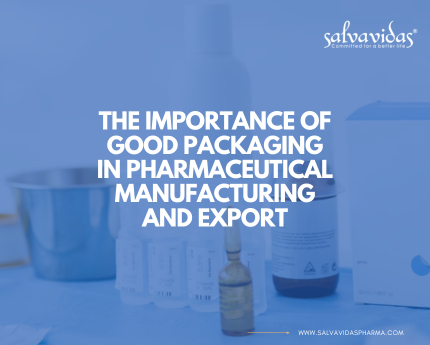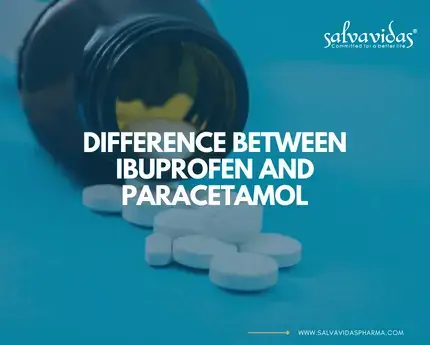
The Importance of Good Packaging in Pharmaceutical Manufacturing and Export
Introduction
When it comes to pharmaceutical products, quality, and safety are non-negotiable. Patients rely on medications to help them heal, manage their conditions, and improve their quality of life. Therefore, pharmaceutical manufacturing companies have a crucial responsibility to ensure that their products are of the highest quality, from the ingredients to the packaging.
While most people tend to focus on the ingredients and efficacy of medicines, the importance of good packaging in pharmaceutical manufacturing and export cannot be understated. In this article, we’ll explore the reasons why packaging plays a crucial role in the pharmaceutical industry, and why manufacturers need to invest in good packaging solutions.
Why is good packaging important in pharmaceutical manufacturing and export?
Packaging is not just a matter of aesthetics or convenience in the pharmaceutical industry. It serves many important functions, such as:
- Protection: Pharmaceutical products are vulnerable to various external factors such as moisture, light, and temperature. Good packaging protects the products from these factors, ensuring that the medicines remain safe and effective for the end-users.
- Tamper-evidence: Quality packaging can serve as a tamper-evident seal that alerts consumers and regulators if a product has been tampered with or opened.
- Compliance: The pharmaceutical industry is subject to strict regulatory requirements that govern everything from the ingredients to the packaging. Good packaging ensures that the products meet these regulations, avoiding costly recalls or penalties.
- Marketing: Packaging can also help to promote brand recognition, provide essential information about the product, and enhance the overall user experience.
Challenges in pharmaceutical packaging
Despite the many benefits of good packaging, there are also some challenges that pharmaceutical manufacturers face, such as:
- Cost: Quality packaging can be expensive, and manufacturers need to balance the cost with the benefits and regulatory requirements.
- Sustainability: Many pharmaceutical packaging materials, such as plastics, are not environmentally friendly, and manufacturers need to find sustainable alternatives.
- Innovation: With the rise of e-commerce, telemedicine, and personalized medicine, pharmaceutical manufacturers need to innovate and adapt their packaging solutions to meet the changing needs of the market.
Best practices in pharmaceutical packaging
To overcome these challenges and ensure that their products are safe, compliant, and effective, pharmaceutical manufacturers should follow these best practices:
- Choose the right materials: Consider the nature of the product, the storage conditions, and the regulatory requirements when selecting the packaging materials.
- Test and validate: Perform rigorous testing and validation to ensure that the packaging solution meets the intended purpose and regulatory requirements.
- Ensure sustainability: Explore sustainable alternatives and optimize the packaging design to minimize waste and environmental impact.
- Innovate and adapt: Stay abreast of the latest trends and technologies in packaging and continuously improve the packaging solutions to meet the changing needs of the market.
FAQs
Q: What are the most common packaging materials used in the pharmaceutical industry?
A: The most common packaging materials in the pharmaceutical industry include plastic, glass, and metal.
Q: How can packaging protect pharmaceutical products from external factors?
A: Packaging can protect pharmaceutical products from external factors such as moisture, light, and temperature by providing a barrier between the product and the environment.
Q: Why is tamper-evident packaging important in the pharmaceutical industry?
A: Tamper-evident packaging is important in the pharmaceutical industry because it can alert consumers and regulators if a product has been tampered with or opened, ensuring that the product is safe and effective.
Conclusion
Good packaging is essential in pharmaceutical manufacturing and export to ensure
the safety, efficacy, and compliance of pharmaceutical products. While the packaging may seem like a trivial aspect, it serves many vital functions, such as protecting the products from external factors, providing tamper evidence, ensuring compliance, and enhancing the user experience.
Pharmaceutical manufacturers face many challenges in packaging, such as cost, sustainability, and innovation, but they can overcome these challenges by following best practices such as choosing the right materials, testing and validating, ensuring sustainability, and innovating and adapting.
In conclusion, good packaging is not just a matter of aesthetics or convenience in the pharmaceutical industry. It is an essential component that can make a significant impact on the safety and efficacy of pharmaceutical products. By investing in quality packaging solutions, pharmaceutical manufacturers can uphold their responsibility to provide safe, effective, and compliant products to patients worldwide.
You May Also Like

Neurology: Understanding the Complexities of the Human Brain

Health Care: A Comprehensive Guide to Promoting Well-being


0